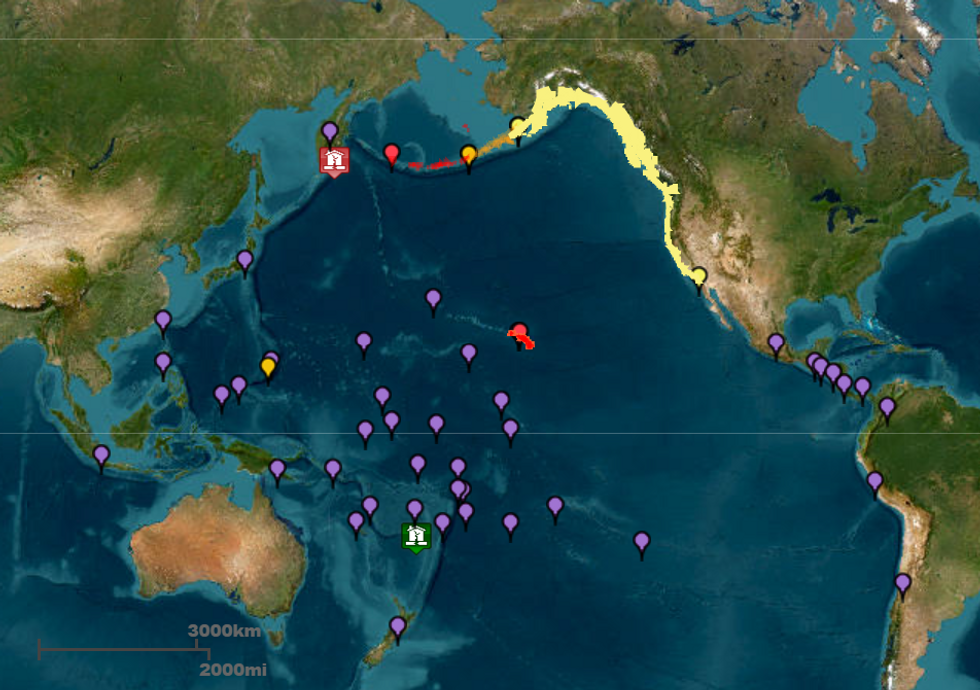



A Russian volcano erupts for the first time in 600 years, just days after a major earthquake shook the region.
The Krasheninnikov Volcano has become active after six centuries of being dormant.
Experts have linked the 8.8-magnitude quake in eastern Russia on Wednesday to the eruption.
The tremor prompted authorities to issue tsunami alerts across the Pacific, affecting Japan, portions of America and the Philippines.

INSTITUTE OF VOLCANOLOGY AND SEISMOLOGY
|A Russian volcano erupts for the first time in 600 years
Olga Girina, who leads the Kamchatka Volcanic Eruption Response Team, confirmed to Russian state media RIA that this marked "the first historical eruption of the Krasheninnikov volcano in 600 years."
She indicated the volcanic activity might be connected to Wednesday's significant earthquake that originated in the Kamchatka region.
The seismic event measured 8.8 on the magnitude scale and originated at the location where Krasheninnikov stands, according to reports.
Girina explained via the Institute of Volcanology and Seismology's Telegram channel that the volcano's most recent lava flow occurred within four decades of 1463, with no documented activity since that period.

Experts have linked the 8.8-magnitude quake in eastern Russia on Wednesday to the eruption
The 1,856-metre peak released an ash column that climbed to approximately 6,000 metres altitude, emergency officials reported.
Russia's emergency services ministry confirmed the ash cloud travelled eastward over the Pacific Ocean, avoiding inhabited regions along its trajectory.
Fresh seismic instability struck the area today when a tremor registering between 6.7 and 7.0 magnitude hit Russia's Kuril Islands, which extend from Kamchatka's southern edge.
The German Research Centre for Geosciences recorded today's tremor at magnitude 6.7, whilst American geological authorities and the Pacific Tsunami Warning System both measured it at 7.0.
 NOAA |
NOAA |
The entirety of the US Pacific coast and Hawaii were placed under either a warning (red), advisory (orange) or 'watch' (yellow) due to the earthquake
Although the Pacific warning system issued no tsunami alert following the latest quake, Russian emergency officials advised caution.
The ministry posted on Telegram: "The expected wave heights are low, but you must still move away from the shore."
The volcanic ash plume posed no immediate danger to populated areas as it drifted over the open ocean, authorities confirmed.
The eruption represents a significant geological event for the region, marking the first time since 1463 that Krasheninnikov has shown volcanic activity.
Emergency services continue monitoring both seismic and volcanic developments across the Kamchatka Peninsula and neighbouring Kuril Islands.
